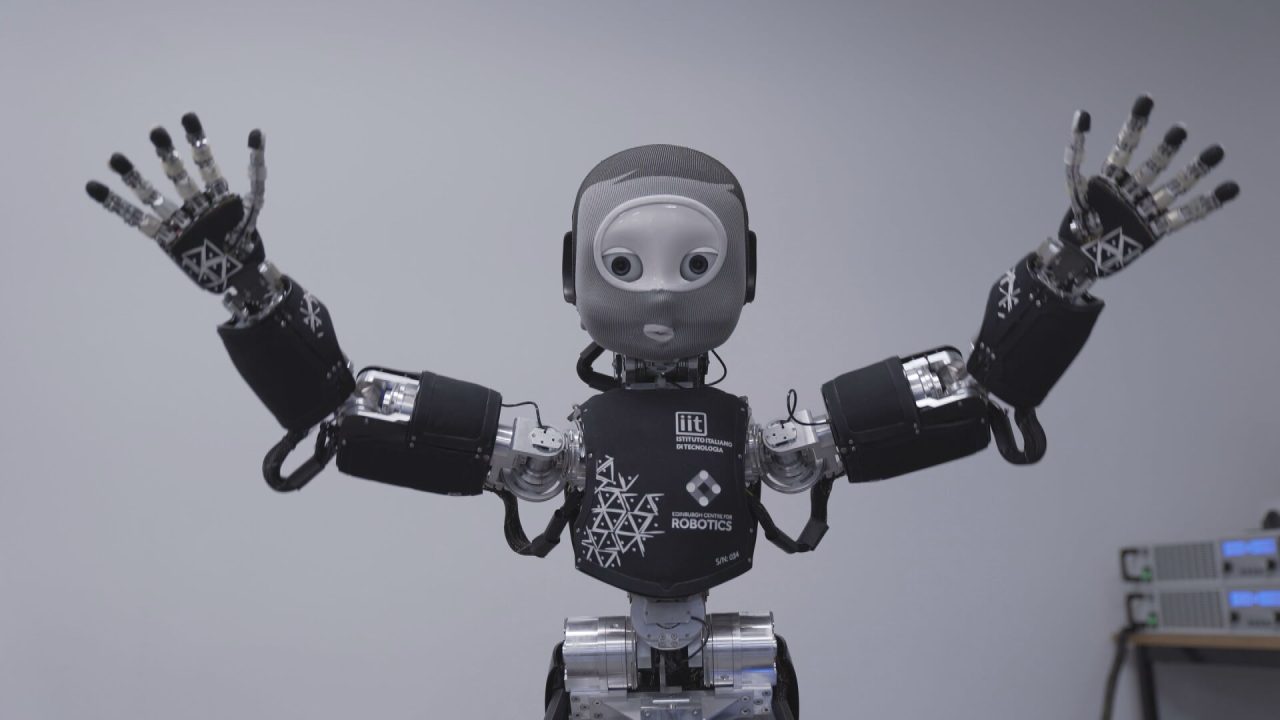Robots and artificial intelligence (AI) could be used to cut NHS waiting lists and reduce delayed discharges in the next two to five years, according to experts.
The £22m National Robotarium in Edinburgh, which opened in September 2022, develops cutting edge robots for various industries but a big focus is on using robotics in healthcare.
With almost 6,000 nursing and midwifery vacancies in Scotland, staff at the facility insists robots can be used to help alleviate pressures on the NHS and staff.
“We’re bound by our imagination,” said Lisa Farrell, business development manager at the National Robotarium.
“Essentially, I think we’re on a bit of a precipice in terms of mass adoption of robotics, and it’s really exciting talking to colleagues, talking to the NHS and talking to different customers and clients.

“There’s a huge amount that robots can do.”
She added: “We are not talking about taking jobs away. But we are talking about alleviating tasks, especially dull, dirty and dangerous tasks. Something that we call the three Ds.
“And if we can use robots to assist human handlers, then all the better.”
Lisa believes that such technology will help make the healthcare sector more efficient
“I think the biggest impact is going to be around time.
“So using things like AI to cut waiting lists, diagnoses coming back from automated labs quicker and allowing people to be discharged from hospital when they’re ready to go, because they might have healthcare robots at home that can assist them.”

One of the main residents at the Robotarium is the Ari robot.
Its most recently been used successfully in a hospital in Paris in a receptionist-like role – answering patient queries and helping staff with routine tasks, thereby relieving pressure on doctors and nurses.
Although there’s no plans to roll Ari out on Scottish hospital wards just yet, it can also be used to improve cognitive decline in older adults.
“The great thing about these kinds of robots is they provide social engagement,” says EmilyAnn Nault, a PHD student at the Edinburgh School of Robotics who is currently leading a study into Ari capabilities in pre-dementia adults.
Ari’s is being put to the test the Robotarium’s Lara Lab – built to look like a normal, flat but it actually testbed for robotic technology.
“You could see something like Ari and a care home, for instance, or respite home,” said EmilyAnn.

“Moving around to different people’s rooms, or even just being in the common area and engaging people in different types of games and activities to keep [older adults’] minds active and that that will hopefully help delay ageing.”
The Ari is relatively tall, has a tablet on its chest users can interact with, glassy eyes and a soft human like voice – something EmilyAnn says was a big hit with her test subjects. And Ari made them feel less alone.
“The older adults I worked with who don’t have any sort of dementia like I got comments about oh, ‘it feels like there’s someone there with you,’ even if you’re not having a full on social conversation.
“But you’re playing a game with it. Or even if it’s just there while you’re playing the game, that social presence does have an impact on the person’s engagement.
“I think especially when people start to interact with robots, you realise they can really be of use and of help and that actually they can take on maybe the more mundane tasks, for instance.
“And then the humans can do the more human connection and have the space and the time to do that.”
Follow STV News on WhatsApp
Scan the QR code on your mobile device for all the latest news from around the country
























